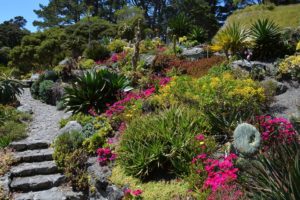As the global population continues to grow and water resources become scarcer, the importance of water-saving outdoor designs becomes ever more crucial. Outdoor spaces, particularly landscapes and gardens, contribute significantly to water consumption due to irrigation needs. Designing water-saving outdoor spaces has become a paramount concern for homeowners, businesses, and communities alike.
This comprehensive guide delves into the principles, strategies, and innovative ideas that can help you create stunning yet sustainable outdoor designs that minimize water usage.

1. Understanding Water Efficiency in Landscaping
To embark on a journey towards water-saving outdoor designs, one must first comprehend the fundamental concepts of water efficiency in landscaping. If you can determine how much water your plants actually need, then you won’t overwater them and waste water. It is important to not only understand a plant’s particular watering requirements but also evapotranspiration.
Evapotranspiration (Et) is the amount of water that is evaporated from the soil and transpired through the plant’s leaves. This amount of water needs to be replaced through watering. If you know your area’s Et rate, you can plan the amount of water to be replaced through irrigation. Call your local water district or cooperative extension service and ask about your Et rate or request an on-site water assessment (if available in your area). Your particular microclimate will also affect evapotranspiration in different areas of your yard.
It’s best to water or irrigate your plants in the early morning when evaporation rates are low. This also provides plants with water before mid-day when the evaporation rate is the highest.
2. Xeriscaping: A Sustainable Approach
Xeriscaping is a systematic method of promoting water conservation in landscaped areas. Although xeriscaping is mostly used in arid regions, its principles can be used in any region to help conserve water. Here are seven basic xeriscaping principles:
- Planning and design: Provides direction and guidance, mapping your water and energy conservation strategies, both of which will be dependent upon your regional climate and microclimate.
- Selecting and zoning plants appropriately: Bases your plant selections and locations on those that will flourish in your regional climate and microclimate. Always group plants with similar water needs together.
- Limiting turf areas: Reduces the use of bluegrass turf, which usually requires a lot of supplemental watering. Consider substituting a turf grass that uses less water than bluegrass.
- Improving the soil: Enables soil to better absorb water and to encourage deeper roots.
- Irrigating efficiently: Encourages using the irrigation method that waters plants in each area most efficiently.
- Using mulches: Keeps plant roots cool, minimizes evaporation, prevents soil from crusting, and reduces weed growth.
- Maintaining the landscape: Keeps plants healthy through weeding, pruning, fertilizing, and controlling pests.
3. Efficient Irrigation Systems
The choice of irrigation system can make or break your water-saving efforts. Drip irrigation, soaker hoses, and smart irrigation controllers are excellent options to consider. Drip systems deliver water directly to plant roots, minimizing evaporation and water wastage. Smart controllers use real-time weather data to adjust watering schedules, ensuring that your landscape receives just the right amount of water.
4. Mulching and Soil Health
Mulching not only enhances the aesthetics of your outdoor space but also plays a pivotal role in water conservation. Organic mulches, such as wood chips or straw, help retain soil moisture, prevent weed growth, and regulate soil temperature. Moreover, nurturing soil health through composting and proper soil amendment can improve water absorption and retention, reducing the need for frequent irrigation.
5. Rainwater Harvesting
An innovative way to supplement your landscape’s water needs is through rainwater harvesting. Collecting rainwater from rooftops and directing it into storage tanks can provide a sustainable source of irrigation water. This method not only reduces strain on municipal water supplies but also helps mitigate soil erosion caused by stormwater runoff.
6. Hardscaping with Purpose
Integrating hardscapes, such as patios, pathways, and retaining walls, can significantly reduce the area that requires irrigation. Using permeable materials for these features allows rainwater to infiltrate the ground, replenishing the water table naturally. Additionally, creative placement of hardscapes can help create microclimates that cater to the water needs of different plants.
7. Proper Plant Selection and Placement
Choosing the right plants for your landscape is crucial in achieving water efficiency. Grouping plants with similar water requirements together, a technique known as hydrozoning, optimizes irigation. Intermingle drought-tolerant plants with ornamentals to create a visually appealing landscape while conserving water.
8. Maintenance and Monitoring
Maintaining a water-saving landscape involves periodic checks and adjustments. Regularly inspect irrigation systems for leaks, blockages, or inefficiencies. Prune plants to ensure healthy growth and remove invasive species that can compete for water resources.
In the face of escalating water scarcity concerns, designing water-saving outdoor landscapes has evolved from a choice to a responsibility. By integrating xeriscaping principles, efficient irrigation methods, smart plant choices, and mindful maintenance, you can achieve landscapes that not only flourish aesthetically but also contribute to a more sustainable future. Embrace the creativity that this challenge offers and watch your outdoor space transform into a haven of beauty and resource-consciousness.
To explore more you can visit Beautiful Backyard Gardens That Use Less Water.


